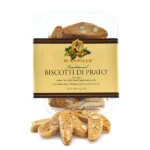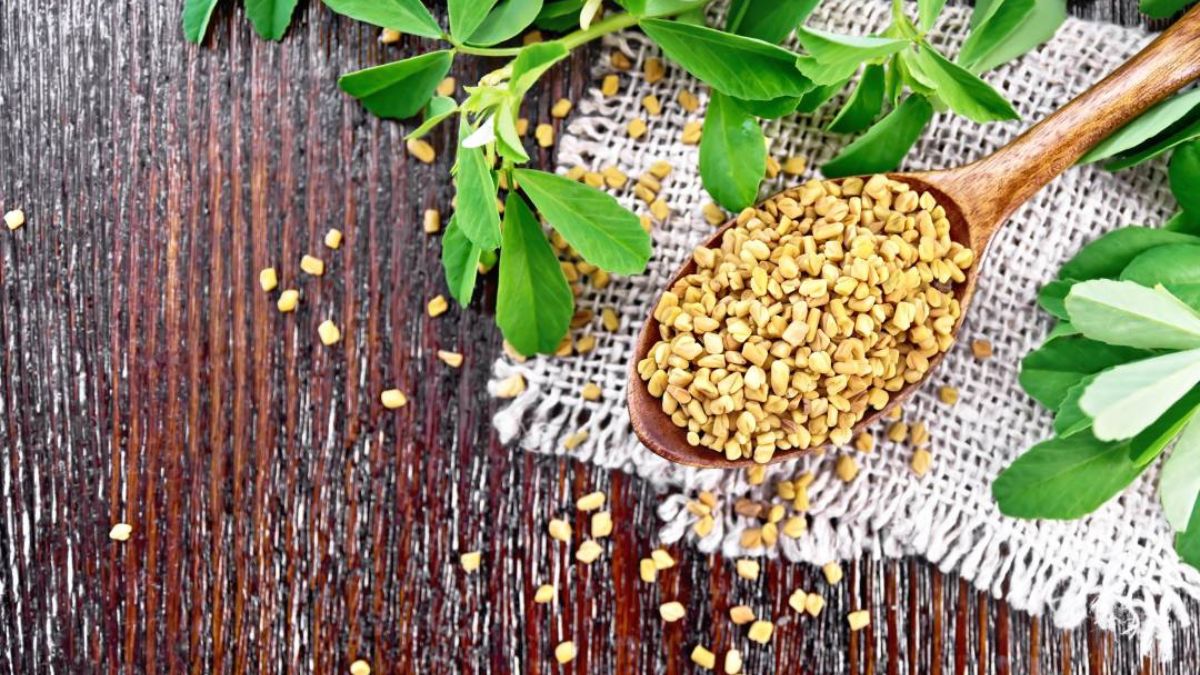
Anonib AZN: Exploring the Anonymous Image Board for Asian Content
October 19, 2025
Бишкоти ди Прато: The Iconic Almond Biscuits of Tuscany
October 20, 2025In a world increasingly turning to natural remedies and wholesome ingredients, foenegriek stands out as a timeless herb that bridges ancient traditions with contemporary wellness. Known scientifically as Trigonella foenum-graecum, foenegriek—often referred to as fenugreek in English—is a plant cherished for its seeds, leaves, and even sprouts. This legume family member has been a staple in kitchens and apothecaries across Asia, the Mediterranean, and Europe for millennia. Whether you’re exploring foenegriek for its potential to regulate blood sugar, enhance digestion, or add a nutty flavor to your dishes, this herb offers a wealth of benefits backed by both traditional wisdom and emerging scientific research.
As interest in herbal supplements surges, foenegriek has gained popularity for its nutrient-dense profile and therapeutic properties. In this comprehensive guide, we’ll delve into the origins, nutritional value, health advantages, culinary applications, and more, ensuring you have all the information needed to incorporate foenegriek into your lifestyle. By understanding foenegriek’s multifaceted role, you can harness its power for better health and flavorful meals.
What is Foenegriek?
Foenegriek is an annual herb that grows to about 60-90 cm tall, featuring slender stems, trifoliate leaves, and small white or yellow flowers that develop into long, slender pods containing yellowish-brown seeds. The name “foenegriek” derives from Dutch, reflecting its historical ties to European herbalism, while its Latin name translates to “Greek hay,” hinting at its use as animal fodder in ancient times.
Native to the Mediterranean region, foenegriek thrives in semi-arid climates and is now cultivated worldwide, including in India, which is the largest producer. The seeds are the most commonly used part, known for their slightly bitter, maple-like taste, while the fresh leaves (methi in Indian cuisine) add a pungent, spinach-like flavor to dishes. Foenegriek can be consumed in various forms: whole seeds, powdered spice, teas, supplements, or even as microgreens.
What makes foenegriek unique is its bioactive compounds, such as saponins, flavonoids, and alkaloids, which contribute to its medicinal properties. For instance, the compound diosgenin in foenegriek seeds is a precursor to certain hormones, explaining its use in traditional medicine for hormonal balance.
History and Origins of Foenegriek
The story of foenegriek dates back over 6,000 years, making it one of the oldest cultivated medicinal plants. Archaeological evidence suggests it was first domesticated in the Near East around 4000 BC, with charred seeds found in ancient sites in Iraq and Egypt. The ancient Egyptians used foenegriek in embalming processes and as a remedy for burns and to induce childbirth, as documented in the Ebers Papyrus from 1500 BC.
In ancient Rome and Greece, foenegriek was valued as fodder for livestock—hence its Latin name—and as a flavoring agent. It spread to India and China via trade routes, where it became integral to Ayurvedic and Traditional Chinese Medicine. In Ayurveda, foenegriek is classified as a warming herb that balances the doshas, particularly for digestive and respiratory issues.
During the Middle Ages, foenegriek reached Europe, where monks cultivated it in monastery gardens for its healing properties. Today, its global cultivation reflects this rich history, with India producing over 80% of the world’s supply. This enduring legacy underscores foenegriek’s adaptability and enduring appeal in both folklore and modern science.
Nutritional Profile of Foenegriek
Foenegriek is a nutritional powerhouse, especially its seeds. Per 100 grams of foenegriek seeds, you get approximately 323 calories, with a macronutrient breakdown of 58 grams of carbohydrates, 23 grams of protein, and 6.4 grams of fat. It’s exceptionally high in dietary fiber at 25 grams (98% of daily value), which supports gut health and satiety.
Micronutrients abound: Foenegriek provides 34 mg of iron (419% DV), crucial for oxygen transport and energy levels; 191 mg of magnesium (48% DV) for muscle function; and significant amounts of manganese, copper, and phosphorus. Vitamins include B6, thiamin, and folate, aiding metabolism and nerve health.
The leaves are lower in calories but rich in vitamin K, vitamin C, and beta-carotene, making them a great addition to salads or curries. Overall, foenegriek’s nutrient density makes it an excellent choice for vegetarians and those seeking plant-based protein sources.
| Nutrient | Amount per 100g Seeds | % Daily Value |
|---|---|---|
| Calories | 323 | – |
| Protein | 23g | 46% |
| Carbohydrates | 58g | 21% |
| Fiber | 25g | 98% |
| Fat | 6.4g | 10% |
| Iron | 34mg | 419% |
| Magnesium | 191mg | 48% |
This table highlights why foenegriek is a superfood in disguise.
Health Benefits of Foenegriek
Foenegriek’s health benefits are extensive, supported by studies and traditional use. One of its primary advantages is blood sugar regulation. The soluble fiber galactomannan slows carbohydrate absorption, helping manage diabetes. Research shows that taking foenegriek seed powder can lower fasting blood sugar levels in type 2 diabetics.
It also supports heart health by reducing cholesterol. Studies indicate foenegriek can lower total and LDL cholesterol while raising HDL, thanks to its steroidal saponins.
For hormonal balance, foenegriek may boost testosterone in men, improving libido and muscle mass, as seen in trials with extracts like Testofen. In women, it alleviates menstrual cramps and enhances breast milk production, with lactating mothers reporting increased supply after supplementation.
Digestive benefits include relieving constipation and inflammation due to high fiber and anti-inflammatory compounds. Foenegriek tea is a popular remedy for upset stomach.
Other potential perks: It may aid weight loss by promoting fullness, improve skin health through antioxidants, and even support hair growth when applied topically.
Culinary Uses of Foenegriek
Foenegriek’s distinctive flavor—bitter-sweet with nutty undertones—makes it a culinary gem. In Indian cuisine, ground foenegriek seeds are essential in spice blends like garam masala and curry powders. Fresh leaves star in dishes like methi paratha or aloo methi.
In Middle Eastern cooking, foenegriek adds depth to stews and breads. Try sprouting the seeds for salads or using powdered foenegriek in yogurt dips for a tangy twist.
For beginners, start with foenegriek tea: Steep 1 teaspoon of seeds in hot water for 10 minutes. Or, incorporate it into baking—foenegriek flour enhances gluten-free recipes.
Recipes to try:
- Foenegriek Chicken Curry: Sauté onions, add foenegriek leaves, chicken, and spices.
- Foenegriek Sprout Salad: Mix sprouts with tomatoes, lemon, and herbs.
How to Incorporate Foenegriek into Your Diet
Start small to avoid bitterness. Soak seeds overnight to soften them, then add to smoothies or oatmeal. Supplements are convenient—typical doses are 5-10 grams of powder daily, but consult a doctor.
Grow your own: Plant foenegriek seeds in well-drained soil with full sun; harvest leaves in 20-30 days and seeds in 3-4 months.
Potential Side Effects and Precautions
While safe in food amounts, high doses may cause diarrhea, bloating, or a maple syrup odor in urine. Avoid during pregnancy due to contraction risks, and monitor blood sugar if diabetic. Allergic reactions are rare but possible in legume-sensitive individuals. Interact with medications like blood thinners or diabetes drugs.
FAQs
What is foenegriek used for? Foenegriek is used for culinary flavoring, blood sugar control, digestion aid, and hormonal support.
Is foenegriek the same as fenugreek? Yes, foenegriek is the Dutch term for fenugreek.
Can foenegriek help with weight loss? Its high fiber content promotes satiety, potentially aiding weight management when part of a balanced diet.
How much foenegriek should I take daily? 5-10 grams of seeds or as directed by a healthcare provider.
Are there any side effects of foenegriek? Common ones include gastrointestinal upset; consult a doctor for personalized advice.
Final Words
Foenegriek embodies the perfect blend of tradition and science, offering a natural way to enhance health and cuisine. Whether sprinkling seeds in your meals or sipping its tea, integrating foenegriek can elevate your wellness journey. Always source high-quality, organic foenegriek and consult professionals for therapeutic use. Embrace this ancient herb—your body and taste buds will thank you.

